Principal Investigator Team Masters Forum 3
The NASA Academy of Program/Project & Engineering Leadership conducted its third Principal Investigator (PI) Team Masters Forum July 28-29, 2011, in Annapolis, Maryland.
The forum, a collaborative effort among the Academy, NASAs Science Office for Mission Assessments, and NASA’s Science Mission Directorate (SMD), brought together teams from the Discovery mission announcement of opportunity (AO) process and the Mars 2016 Trace Gas Orbiter mission to gain a better understanding of the role of a Principal Investigator (PI) at NASA. Master practitioners from past science missions shared stories, perspectives, lessons learned, and best practices with their colleagues.
Download the Principal Investigator Team Forum 3 Notebook.
View All Past PI Team Masters Forum Videos
Panel Chairs and Presenters
 |
 |
 |
 |
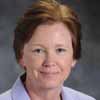 |
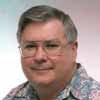 |
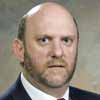 |
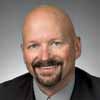 |
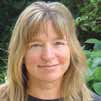 |
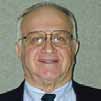 |
 |
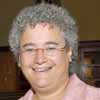 |
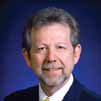 |
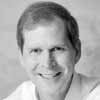 |
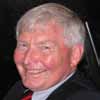 |
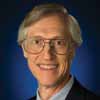 |
 |
 |
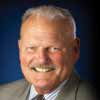 |
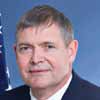 |
 |
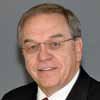 |
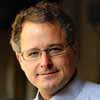 |
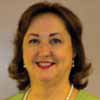 |
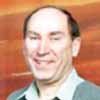 |
 |
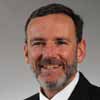 |
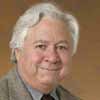 |
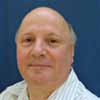 |
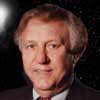 |
 |
|||||
Presentations
Speakers
- Bruce Banerdt is a planetary geophysicist, working in the Earth and Space Sciences Division at the Jet Propulsion Laboratory since 1977. He has participated in numerous planetary flight-instrument teams, including the Mars orbiter laser altimeter on Mars Global Surveyor, the synthetic aperture radar on the Magellan mission to Venus, the seismometer on the NetLander mission to Mars (unfortunately canceled before launch), and the SESAME acoustic sounder on the European Rosetta comet mission. He helped develop a miniature micro-electro-mechanical system seismometer and has been working for the past twenty years to send seismometers to explore Mars and the moon. He is currently the principal investigator of the Geophysical Monitoring Station Discovery mission, a Mars geophysical lander that is one of three missions selected to enter a one-year Phase A competition possibly leading to a launch in 2016.
- Noel Hinners consults for NASA and the aerospace industry and 4-D Systems, which supports the NASA Academy of Program/Project and Engineering Leadership. He retired in 2002 from Lockheed Martin Astronautics where, from 1994 through 2000, he was their vice president of Flight Systems responsible for planetary missions. Prior to that, he was chief scientist of Business Development and Advanced Programs for astronautics. Dr. Hinners served as NASA associate deputy administrator and chief scientist, director of Goddard Space Flight Center, director of the Smithsonians National Air and Space Museum, NASAs associate administrator for Space Science, and director/deputy director of Lunar Programs.
- John Mather is the senior project scientist for the James Webb Space Telescope at Goddard Space Flight Center. His research centers on infrared astronomy and cosmology. As an NRC postdoctoral fellow at the Goddard Institute for Space Studies (New York City), he led the proposal efforts from 1974 to 1976 for the Cosmic Background Explorer (COBE) and came to Goddard to be the study scientist (19761988), project scientist (19881998), and principal investigator for the far-infrared absolute spectrophotometer on COBE. He showed that cosmic microwave background radiation has a blackbody spectrum within 50 parts per million, confirming the big bang theory to extraordinary accuracy. He is the recipient of numerous awards, including the Nobel Prize in Physics (2006) with George Smoot for the COBE work and the NASA Distinguished Service Medal (2007).
- Michael Ryschkewitsch is the chief engineer at NASA. He is responsible for the overall review and technical readiness of all NASA programs. Previously, he served as the deputy director for Goddard Space Flight Center and director of the Applied Engineering and Technology Directorate at Goddard. The Office of the Chief Engineer (OCE) provides policy direction, oversight, and assessment for the NASA engineering and program management communities and serves as principal advisor to the NASA Administrator and other senior officials on matters pertaining to the technical readiness and execution of NASA programs and projects.
Abstracts
The Environment
Noel Hinners will rhapsodize on the major challenges he had as a center director in enabling the science and engineering implementation of the Cosmic Background Explorer (COBE). The internal Goddard Space Flight Center environment for COBE was unusual in that it was managed by the Engineering Directorate to provide essential hands-on training to the engineers. The science and engineering aspects of COBE were in and of themselves challenging. These were exacerbated by episodic changes in launch vehicles. Combined, this led to much more staffing than originally envisioned, further stressing the center. Looking outward, there were the challenges in dealing with NASA Headquarters (13.7 miles distant) and the pressures to remain on the Space Shuttle rather than switching back to an expendable launch vehicle. Sanity won.
The Mission
John Mather will discuss the challenges of organizing and running two teams: the COBE science team and the James Webb Space Telescope (JWST) science team. COBEs three instruments presented unique challenges. Each instrument had its own principal investigator (PI), so there were different executive styles, which will be compared. Also, the Science Working Group was constituted as co-investigator on all three instruments, so there were team-level challenges and significant conflicts to be managed, as documented in the book The Very First Light: The True Inside Story of the Scientific Journey Back to the Dawn of the Universe.
Two of the PIs were in house at Goddard, leading to excellent communication with the engineering teams, while one PI was external at Berkeley, leading to significant difficulties that had to be managed by recruiting an in-house deputy PI. The special situation of a government team being led by an external investigator required serious negotiation, since NASA does not delegate management of its civil service staff to outside people. The whole science team played a major role in project decisions regarding improving the instrument sensitivity for the differential microwave radiometer (DMR) instrument (a good thing, otherwise the DMR would not have detected cosmic fluctuations).
On the JWST observatory, a strategic mission for NASA, the European Space Agency, and the Canadian Space Agency, the science team is advisory, and team members are not co-investigators on all the instruments. The comparison will be illustrative.
The Project
Michael Ryschkewitsch will discuss several aspects of program management for robotic missions, including using a systematic approach involving three phases: determining evaluation, validation and verification, and benchmarks; defining responsibilities of line and project management in the successful organization; and handling the people problem during the formulation and implementation phases. Also to be discussed is what is involved in creating a work agreement, including predicting management success, achieving program excellence, and understanding root causes, systems engineering and its various phases, NASA governance, and requirements.
Presentations
- GEophysical Monitoring Station (GEMS): A Discovery Mission to Understand Terrestrial Planet Evolution — by Bruce Banerdt (PDF)
- COBE (Cosmic Background Explorer) Mission and Results — by John Mather (PDF)
- COBE: An exhilarating story of White House-induced and NASA self-inflicted management complexity — by Noel Hinners (PDF)
- Cosmic Background Explorer, COBE: Goddard in the 1980s — by Mike Ryschkewitsch (PDF)
Speakers
- Ellen Stofan is vice president of Proxemy Research and honorary professor in the Department of Earth Sciences, University College London. She conducts research on the geology of Venus, Mars, Titan, and Earth. While at the Jet Propulsion Laboratory (19912000), she was chief scientist of NASAs New Millennium Program, the deputy project scientist on the Magellan mission to Venus, and the experiment scientist on Spaceborne Imaging Radar-C (SIR-C), which flew on two shuttle flights in 1994. She is a co-investigator on the MARSIS instrument on Mars Express and an associate member of the Cassini RADAR team.
- M. Patrick McCormick has been performing research on the development and application of sensors for measurement in Earths atmosphere for the past forty-seven years. This research has primarily focused on lidar and satellite limb extinction (occultation) techniques for global characterization of aerosols, clouds, ozone, and other atmospheric species. He is a Fellow of the American Geophysical Union, a Fellow of the American Meteorological Society, and a member of NASAs Advisory Council Earth Science Subcommittee. Dr. McCormick is principal investigator for SAM II, SAGE I, SAGE II, SAGE III, and LITE, and coprincipal investigator for SAM and Cloud-Aerosol Lidar and Infrared Pathfinder Satellite Observation satellite experiments.
- Steve Saunders was a scientist at the Jet Propulsion Laboratory (JPL) in Pasadena for thirty-two years. At JPL he was project scientist for the Magellan Venus mission and the Mars Odyssey mission. After leaving JPL, he worked at NASA Headquarters for five years, where he was NASA program scientist for the Planetary Data System, Mars Reconnaissance Orbiter, and Mars Express. He also managed NASAs Planetary Geology and Geophysics Program, which supports about 170 U.S. scientists.
- William Gibson has extensive experience in the management of space-science missions, payloads, instruments, and spacecraft avionic systems. He served as the project manager for the MIDEX imager for Magnetopause to Aurora Global Exploration, science payload manager for the New Horizons mission to Pluto, and project manager for the instrument suite science team on the Magnetospheric Multiscale mission through Phase A.
- Steve Jolly is the Lockheed Martin systems engineering director for the GOES-R program (next-generation weather satellites in geosynchronous orbit) in the sensors and exploration systems line of business. He is also the program manager for the Mars Reconnaissance Orbiter and was chief engineer during its development. Dr. Jolly has served project Orion off and on as an independent advisor and tiger-team lead for entry, descent, and landing (EDL), and previously served as a member of EDL systems engineering team and critical events risk process for Phoenix, Stardust, and Genesis. He was also program manager for the Mars Science Lab (MSL) aeroshell and is a member of the Independent Assessment Panel for the MSL landing-site selection.
- Edward Sedivy is the Lockheed Martin Space Systems Company director of Systems Engineering and Mission Operations. Prior to this role, he was the chief engineer for Lockheed Martins Sensing and Exploration Systems, which includes interplanetary spacecraft, NASA and NOAA weather satellites, space science instruments, Hubble Space Telescope, Spitzer Infrared Observatory, advanced laser technology, and advanced space-power generation.
Abstracts
Principal Investigator
An overview of the building of a PI-led team for a NASA mission will be presented as well as the important relationships the PI has with the PM and systems engineer. PI traits, qualities, and responsibilities will be addressed and will be followed by a discussion of how a PI chooses the science team and structures the mission team. Other topics to be addressed include developing a clear Mission Requirements Document and the process and importance of descoping. Finally, the importance of the total involvement and perseverance of the PI in following the mission development will be discussed along with key indicators of mission development status (e.g., the use of planned versus actual monthly milestone accomplishments).
Project Scientist
The presentation will cover experience and lessons learned as project scientist during the Mars Odyssey mission and will describe the duties of a planetary mission project scientist.
Project Manager
The multitude of roles played by the project manager (PM)ranging from daily technical management to project psychiatristwill be discussed. The criticality and complexity of the relationships between the PI and PM, PM and the mission systems engineer, and PM to NASA will be discussed. The process of building the teams infrastructure in the new world of earned value management and joint confidence level will also be presented. Examples of real-world problems and solutions from IMAGE, New Horizons, and other missions will be used to illustrate points throughout the presentation.
Systems Engineering
Systems engineering plays a critical role in space-mission development and is the right hand of the PI and the PM to ensure a low-risk, affordable achievement of the missions technical objectives. The role of the systems engineer in complex technical development is not to act as a clerk to manage a requirements database, or merely an analyst to calculate mass and power margins, but is the technical visionary that leads vertical and horizontal design and integration of the missionespecially across the major interfaces of science instruments and ground and mission operations. Roles and responsibilities of the systems engineer within the PI-led team and the essential leadership qualities, experience, and system view that past successful PI missions have practiced will be discussed, as well as the challenges of the current state-of-the-art in space-mission development that face todays systems engineers.
Contractor Team
Industry is a valuable member of the PI-led mission team and provides a different perspective from project leadership and science members. The need to embed compelling science coupled with the cost capped execution model creates a set of constraints that drive best-fit solutions. The experienced industry partner often becomes the voice of reason that seeks to accommodate the project/NASA center and PI science needs, while keeping an eye on execution risk. Industry is motivated to push for the early flow-down of science requirements, the development of a mission concept that balances complexity and cost, and prudent application of new technology that enables win discriminators. When well executed, the competed PI-led mission team effectively bonds together during the CSR and site visit activities. Examples will include Phoenix and MAVEN, including experience gained from problems and the ways they were successfully solved.
Presentations
- Titan Mare Explorer (TiME): First Exploration of an Extraterrestrial Sea — by Ellen Stofan (PDF)
- The Successful Project Team Key Roles and Responsibilities — by Bill Gibson (PDF)
- Systems Engineering: Roles and Responsibilities — by Steve Jolly (PDF)
- The Successful Project Team: Key Roles and Responsibilities — by Ed Sedivy (PDF)
- PI-Team Composition Principal Investigator — by Pat McCormick (PDF)
- The Project Scientist Role — by Steve Saunders (PDF)
Speakers
- Jessica Sunshine, the Comet Hopper principal investigator (PI), is a professor of astronomy at the University of Maryland, where she previously had been a senior research scientist. For ten years prior to coming to the University of Maryland, she worked for SAICs Advanced Technology Applications Division, where she was chief scientist and a member of SAIC Corporate Level Science and Technology Council. She is fortunate to be working on four active missions, including the Deep Impact extended investigation (DIXI), for which she is deputy PI. She also works as a co-investigator on Stardust NExT; the moon mineralogy mapper (M cubed) on Chandrayann-1, Indias first lunar mission; and Dawn, which arrives at the asteroid Vesta in July. A key highlight of this activity was the discovery of widespread water on the surface of the moon from both M3 and DIXI.
- Noel Hinners consults for NASA and the aerospace industry and 4-D Systems, which supports the NASA Academy of Program/Project and Engineering Leadership. He retired in 2002 from Lockheed Martin Astronautics where, from 1994 through 2000, he was their vice president of Flight Systems responsible for planetary missions. Prior to that, he was chief scientist of Business Development and Advanced Programs for astronautics. He joined Martin Marietta Corporate as vice president of strategic planning in 1989. Dr. Hinners served as NASA associate deputy administrator and chief scientist, director of Goddard Space Flight Center, director of the Smithsonians National Air and Space Museum, NASAs associate administrator for Space Science, and director/deputy director of Lunar Programs.
- Joe Vellinga has been with Lockheed Martin for forty-two years. His roles throughout his career have included Discovery proposal manager, Stardust program manager, Suess-Urey (Genesis) program manager, and OSIRISREx proposal and program manager. He was also the mission success manager for Space Exploration Systems, program manager for the Visible Infrared Spectral Radiometer, department deputy manager for payload sensors and instruments, program manager for the Manned Maneuvering Unit, and the Zenith star space-based laser optical payload manager.
- Tom Duxbury has actively participated in space exploration, holding the following positions at the Jet Propulsion Laboratory from 1966 to 2008: group supervisor for optical navigation, advanced mission studies, and solar system dynamics; program manager for information systems; planetary research scientist; project manager for Stardust; project manager for Stardust NExT; and project manager for EPOXI. He is currently a research professor for planetary science at George Mason University and recently completed being Visiting Scholar at the University of Miami.
Abstract
Stardust and Stardust New Exploration of Tempel-1 (NExT), led by principal investigators Don Brownlee and Joe Veverka respectively, provide an impressive array of forefront science results. Samples returned from Stardust have changed our concepts of the composition of comets. As with Apollo samples, new results will continue over the next many decades as both new analytical techniques and scientific questions arise. Stardust NExT provided an economical opportunity to use a valuable space asset to extend our understanding of the comet Tempel-1 and to investigate the crater left by the earlier NASA Deep Impact mission.
The Stardust sample return mission was selected as the fourth mission of NASAs Discovery Program in December 1995. Phase B began December 1995, and Phase C/D began nine months later. Stardust launched on February 7, 1999, and the sample-return capsule (SRC) landed at 3:00 a.m. on January 15, 2006, at the Utah Test and Training Range.
Mark Saunders was the Discovery program manager at NASA Headquarters at the start of the program and set the mission-success criteria and fee structure for Lockheed Martin. Phase C/D was twenty-eight months to launch. The development was extremely mass constrained in the middle of Phase B when an error was discovered in the committed launch vehicles payload capability366 kg to 312 kg. The spacecraft avionics and software were developed in parallel with the 98 missions Mars Climate Orbiter and Mars Polar Lander. The SRC was developed from a blank sheet with a new heat-shield material in about two and a half years.
After launch, the NASA Earth-entry requirements changed and forced a redesign of the approach trajectory. Risk tolerance had also changed since launch, forcing a re-review of all risks associated with Earth return. After successfully completing the Stardust mission, the Stardust New Exploration of Tempel-1 Discovery mission of opportunity was initiated with spacecraft recontact and verification of full operational status in 2007. The spacecraft encountered Tempel-1 on February 14, 2011, sending home seventy-two images of the nucleus, including the Deep Impact crater. The final maneuver to propellant depletion was executed on March 24, 2011.
Speakers
- Jim Green received his PhD in space physics from the University of Iowa in 1979 and began working in the Magnetospheric Physics Branch at Marshall Space Flight Center in 1980. At Marshall, Dr. Green developed and managed the Space Physics Analysis Network that provided scientists all over the world with rapid access to data, to other scientists, and to specific NASA computer and information resources.From 1985 to 1992 he was the head of the National Space Science Data Center (NSSDC) at Goddard Space Flight Center. In 1992, he became the chief of the Space Science Data Operations Office until 2005, when he became the chief of the Science Proposal Support Office. While at Goddard, Dr. Green was a co-investigator and the deputy project scientist on the imager for Magnetopause-to-Aurora Global Exploration mission. In August 2006, Dr. Green became the director of the Planetary Science Division at NASA Headquarters.
- Jeffrey Grossman is a physical scientist at NASA Headquarters. After completing undergraduate work at Brown University, he received his PhD in geochemistry from University of CaliforniaLos Angeles in 1983. He was a research chemist at the U.S. Geological Survey from 1984 to 2010, conducting work on terrestrial geochemistry and NASA-funded work on meteorites. Since coming to NASA in 2010, he has taken over management of three research and analysis programs: Cosmochemistry, Laboratory Analysis of Returned Samples, and Planetary Major Equipment. In addition, Dr. Grossman also has management responsibilities for NASAs curation activities at Johnson Space Center, as well as NASAs joint program with National Science Foundation and the Smithsonian to collect and curate Antarctic meteorites. He is NASAs representative to the interagency working group on scientific collections. In 2011, he served as program scientist for the New Frontiers program and helped manage the review and selection process for NASAs Near-Earth Object Program.
- Lindley Johnson is assigned to the NASA Headquarters Science Mission Directorate, Planetary Science Division, as the lead program executive for the Discovery Program of mid-class solar-system exploration missions. Previously, he was the program executive for NASAs Deep Impact mission to comet Tempel-1, which delivered an impact probe to the comets surface on July 4, 2005, to explore the composition and interior structure of short-period comets. The Discovery Program has developed and flown ten different spacecraft on missions throughout the inner solar system. It now has two ongoing missions in flightone in orbit around Mercury and one to the large asteroids Vesta and Ceresand another mission to collect a high-resolution gravity map of the moon is in launch preparation. He is also the program executive for NASAs Near-Earth Object Program.
- Dennon Clardy is the program manager for the Discovery, New Frontiers, and Lunar Quest programs managed by Marshall Space Flight Center for the Planetary Science Division of the Science Mission Directorate. He has served NASA for twenty-two years in a number of systems engineering, project management, and program management positions. These include systems engineer on the first flight of the Tethered Satellite System, deployer chief engineer for the re-flight of the Tethered Satellite System, chief engineer for the USMP-4 (Spacelab) mission, chief engineer/project manager for the Vapor Compression Distillation Flight Experiment (Spacehab), deputy project manager in the Space Launch Initiative Program, and deputy project manager in the Orbital Space Plane Program. He served as a program mission manager (Genesis, Stardust, Dawn, and Juno) and deputy program manager for the Discovery and New Frontiers Program Office before becoming the program manager in January 2009. Mr. Clardy also served a detail assignment to NASA Headquarters as the associate director of the Planetary Science Division.
Abstracts
Roles of the Program Scientist and Program Executive
The Science Mission Directorate (SMD) at NASA Headquarters has designated the program executive (PE) as the key technical and programmatic point of contact for SMDs projects. As such, the PE provides a vital link between supporting the execution of the project and the top-level management and oversight responsibilities of the Directorate. In this position, the PE takes on a dual persona as both the Headquarters advocate for the project, but also The Enforcer of NASA project management rules and requirements. Recognizing these roles and understanding how they interrelate will aid the project team in getting comfortable when interacting with their PE, which can add great value to the project.
Working in the Discovery Program Office
The primary responsibility of the Discovery Program Office is to ensure Discovery missions are successful in achieving their science objectives. We do this by working with the principal investigator (PI) and project team to manage the cost, schedule, and technical elements of the project and by guiding them through the various processes that make up the life cycle of these missions. This presentation will provide an overview of the Discovery Program Office organization, functions, and approach to working with the PI, the project team, and SMD to ensure the success of Discovery missions. The intent is to provide guidance on working relationships and processes, as well as lessons learned by the program office from the management of multiple Discovery, New Frontiers, and Lunar Quest missions. Expectations of the PI on a PI-led mission will also be addressed.
Presentations
Speakers
- Bruce Cantor is a senior staff scientist at Malin Space Science Systems, which he joined in 2000. He is principal investigator of the Mars Atmospheric Global Imaging Experiment on the joint NASAEuropean Space Agency 2016 ExoMars Trace Gas Orbiter mission, a co-investigator on the Mars color imager experiment on the Mars Reconnaissance Orbiter (MRO) mission, and was extensively involved in the Mars observer camera experiment onboard the Mars Global Surveyor orbiter. In addition, his responsibilities have included providing weather assessments and regular weather reporting in support of landing-site selection; aerobraking; entry, descent, and landing; and surface operations for a number of Mars missions, including Mars Odyssey, Mars Exploration Rovers, Beagle, MRO, Phoenix, Mars Science Laboratory, and the ExoMars Entry, Descent, and Landing Demonstrator Module.
- Noel Hinners consults for NASA and the aerospace industry and 4-D Systems, which supports the NASA Academy of Program/Project and Engineering Leadership. He retired in 2002 from Lockheed Martin Astronautics where, from 1994 through 2000, he was their vice president of Flight Systems responsible for planetary missions. Prior to that, he was chief scientist of Business Development and Advanced Programs for astronautics. He joined Martin Marietta Corporate as vice president of strategic planning in 1989. Dr. Hinners served as NASA associate deputy administrator and chief scientist, director of Goddard Space Flight Center, director of the Smithsonians National Air and Space Museum, NASAs associate administrator for Space Science, and director/deputy director of Lunar Programs.
- Michael Luther has more than forty-two years of industry and government experience in the development and management of space-based scientific remote-sensing systems. He spent twelve years in industry prior to his thirty years of government service with NASA. He joined Langley Research Center in January 1981 for the development, launch, and early mission operations of a series of Earth remote-sensing instruments. Since joining NASA Headquarters in 1987, Mr. Luther has held a series of positions with increasing responsibilities, including Upper Atmosphere Research Satellite program manager, Earth Science Division flight program director, deputy associate administrator in the Office of Earth Science, and deputy associate administrator for programs in the Science Mission Directorate. In the course of his career, he has been responsible for the development and launch of more than fifty successful remote-sensing spacecraft and Space Shuttle payloads.
- Roy Maizel is the Science Mission Directorates (SMD) deputy associate administrator for Management, a position he has held since June 2008. In this capacity he is responsible for the oversight of SMDs more than $5 billion annual budget, strategic planning, policy development, and the provision of administrative support to SMDs two-hundred person NASA Headquarters workforce. He also serves as a management focal point for institutional issues at Goddard Space Flight Center and the Jet Propulsion Laboratory.
Abstract
Performing to committed cost has forever been a space and Earth science goal, along with attaining technical and scientific goals. Emphasis on the cost element, however, has greatly increased over the past decade. This includes enhanced external oversight of NASAs cost performance by the Government Accountability Office, Office of Management and Budget, and several Hill committees. It is clearly in our own best interest to understand the rationale for that emphasis and pay special attention to increasing our ability to perform to committed cost.
Successful project-resource control on NASA projects is grounded not just in the application of specific cost monitoring and control techniques, but also in a thorough understanding of both the external and internal environments in which NASA projects are approved, formulated, developed, and operated. NASA is a part of the discretionary component of the federal budget and operates in a very constrained budgetary environment. It is therefore imperative that projects be managed within their approved budgets. The Science Mission Directorates (SMD) cost-performance requirement is very simple: Meet your commitment as represented by your proposal.
In the continuing effort to improve our processes for selecting and managing our projects, the agency and SMD have instituted a number of new processes designed to improve communication, understanding, and trust between the project, the supporting institution, SMD, the agency, and our sponsors and stakeholders. These processes may be self-imposed or in response to external requirements (e.g., legislation). The basic pattern of processes is driven by the life-cycle review process and is augmented as required. The project life-cycle review process and most of these processes are presented in the current version of NASA Policy Directive 7120.5, NASA Space Flight Program and Project Management Requirements, although some are evolving and are yet to be fully documented and implemented.
The origin for all these processes is the desire of the Directorate and the agency to establish and improve its credibility with our sponsors and stakeholders by demonstrating our ability to clearly define the cost, schedule, technical requirements, and risk associated with our major programs and projects at the commitment milestone (KDP-C) and to execute those activities within the commitments we make to the sponsors and stakeholders.
Presentations
- 2016 Trace Gas Orbiter: Mars Atmospheric Global Imaging Experiment (MAGIE) — by Bruce Cantor (PDF)
- The Mission Cost Challenge — by Noel Hinners (PDF)
- SMD Mission Development: Controlling Costs for the Future — by Michael Luther (PDF)
- Project Resource Controls and Earned Value Management — by Roy Maizel (PDF)
Speakers
- Alfred McEwen is a professor in the Department of Planetary Sciences, University of Arizona, and director of the Planetary Image Research Lab (PIRL). He has studied planetary surfaces for more than thirty years, including time at the U.S. Geological Survey prior to joining the University of Arizona in 1996. His research interests include volcanology, cratering, slope processes, and remote sensing of planetary surfaces. His experience with spacecraft science experiments includes guest investigator with the Voyager imaging team at Neptune; Galileo interdisciplinary scientist associated with the solid-state imaging (SSI) team; lead sequence-planning and science analyst for SSI observations of Io; Cassini imaging science subsystem team member, leading Titan surface imaging; Mars Observer/ Mars Global Surveyor participating scientist for Mars Orbital Camera; Clementine advisory committee and science team; principal investigator of the high-resolution imaging science experiment onboard Mars Reconnaissance Orbiter; participating scientist on Mars Odyssey THEMIS; co-investigator on the Lunar Reconnaissance Orbiter camera; and principal investigator of the high-resolution stereo color imager on the NASA/European Space Agency ExoMars Trace Gas Orbiter.
- Angelo (Gus) Guastaferro, formerly chairman and CEO of the electronics firm nVIEW Corporation, is experienced in technology management. He served as vice president with the Lockheed Martin Missiles and Space Company and was deputy director of Ames Research Center. Mr. Guastaferro is also experienced in project and program management and was involved in the Viking mission to Mars and in large space structures; he also served as director of Planetary Programs while at NASA. He is currently consulting for NASA on future space systems and serving as Chair Emeritus of Hampton Roads Technology Council and as director of Virginia Technology Alliances. He has a BSME from the New Jersey Institute of Technology, an MBA from Florida State University, and an AMP from Harvard Business School.
- Dennis Matson has carried on observations of solar-system bodies and has developed methods for the interpretation of remote-sensing data. He has used imaging, spectrophotometry, radiometry, and spectroscopy in determinations of the surface states and compositions of atmosphereless solarsystem bodies; participated in the development of instrumentation for astronomical telescopes and spacecraft; and carried out scientific investigations using the International Ultraviolet Explorer and the Infrared Astronomical Satellite in orbit about the Earth and with the Galileo and Cassini-Huygens spacecraft in the outer solar system. During the four-year Cassini-Huygens prime mission, Dr. Matson served as the project scientist, leading more than 270 scientists in the United States and in Europe in developing and carrying out Cassinis investigations. Also, he served as the study scientist for the Titan and Saturn System Mission, a possible flagship mission to the Saturnian system. He is a senior research scientist at the Jet Propulsion Laboratory. His current research is on early, outer-solar-system chronology.
- Richard Zurek is currently the chief scientist for the Mars Program at the Jet Propulsion Laboratory ( JPL), California Institute of Technology. He has been heavily involved in the development and implementation of recent missions to Mars, including lead of atmospheric advisory groups supporting the aerobraking phases of the Mars Global Surveyor, the 2001 Mars Odyssey, and Mars Reconnaissance Orbiter (MRO) spacecraft. He also continues to serve as the project scientist for MRO, now in its fifth year of observations of the atmosphere, surface, and subsurface of Mars. While at JPL, Dr. Zurek has studied the atmospheres of Earth and Mars, including the causes and effects of the great dust storms that occur episodically on Mars.
Abstract
This presentation will illustrate the techniques critical to managing resources of science projects led by principal investigators (PI). Those involved in Viking, Cassini, and past Mars missions will share their experiences about managing resources and margins successfully.
Critical resources traditionally include mass, power, schedule, cost, and, perhaps more provocatively, risk. (Risk is a resource in that decisions leading to increased or decreased risk will generally increase or decrease other resources.) Critical resources also include operational timeline and relationships (teaming). Timeline here differs from development schedule although considerations of adequate timeline for post-launch activities have design and implementation trade-space implications. Team building includes many items, such as establishing efficient communication paths and lines of authority, matching skills to tasks, and delegating appropriately. A common understanding and commitment to the goals of the mission, a shared understanding of priorities, and a basis of trust are hugely valuable resources.
The techniques successfully applied on Viking stand as a model for application to smaller science-space projects, and the lessons learned can be applied to future space-science programs. Cassinis challenge of how to handle resource margins for payload instruments resulted in the creation of the Resources Trading System (RTS), a creative solution to a common problem.
The Cassini payload manager allocated payload resources (e.g., space, weight, power), and margin comprised dollars by fiscal year, mass, power, and data rate. An exchange was set up to facilitate trading margin among the instruments and also with the spacecraft. If instrument A had excess mass, the PI could place a sell offer on the exchange, stating the amount of mass and the price (e.g., $, W, bps). If instrument B was short of mass and its PI liked the price, he could buy. The payload manager then recorded the trade, and the official allocations to A and B were changed accordingly. This was a winwin situation as each party felt they had improved their balance of resources.
Proper attention to margins is a key aspect of establishing a strong foundation for program execution, and it goes beyond technical margins to include schedule, cost, and timeline margins. Understanding the application of heritage for missions is also key to avoiding surprises that may erode project margins.
Presentations
Speakers
- Marc Allen is the director for strategic and international planning within NASAs Science Mission Directorate. His principal responsibilities include international cooperation, strategic-planning coordination, and oversight of the Directorates relationship with the National Research Council. He coordinates Directorate plans and policies and represents them to key external groups, including the research community and foreign partners. Before coming to NASA in late 1997, he served for seven years as director of the National Research Councils Space Studies Board. Previously, he held management positions at CTA Incorporated and Computer Sciences Corporation, working at Langley Research Center and Goddard Space Flight Center in the areas of space systems analysis and applications software development. Holding a PhD in astronomy from the University of Michigan, his first career was postdoctoral research in solar physics and stellar spectroscopy.
- James (Jim) Zimmerman is president of International Space Services, Inc. He also serves as past president of the International Astronautical Federation, which has two hundred member organizations in more than fifty countries. Mr. Zimmerman has more than thirty-five years of international space program cooperation experience. He is particularly familiar with space program and policy developments in the United States and in Europe where he served as NASAs European representative for twelve years. Before retiring from the U.S. government in 1997, he held several senior executive positions at NASA and other federal agencies.
- Paula Geisz has served as NASAs manager of International Technology Transfer Policy and export-control administrator since January 2007. She is responsible for ensuring NASA compliance with all U.S. export-control laws and regulations; issuing NASA policy guidance; assisting the center export administrators with implementation issues; managing NASA export-licensing and reporting efforts; reviewing foreign national visitors to NASA facilities; representing NASA at various U.S. government interagency forums; coordinating NASA responses to the Departments of State, Commerce, and Defense on export issues; and assisting NASA programs and projects with the use of export-license exemptions and exceptions and import permits.
Abstract
Throughout NASAs history, international collaboration has played an important role in both its science and human spaceflight programs. This collaboration has become the new norm in space, as more than sixty international space agencies increasingly work together in a broad range of space-related activities. Nearly two-thirds of NASAs space-science missions now involve international collaboration on many levels. Increased international collaboration in space is expected to continue in coming years and is well aligned with administration space policy. Tightening budget constraints are increasing the importance of collaboration even as they introduce new challenges. This session will consider these trends and how they affect project management.
Our international partners have diverse national goals in space as well as different general governance and space agency structures and processes. In addition, language barriers and variations in cultural norms and practices add to the interest but also to the challenges of implementing space projects with foreign partners. Awareness and adaptation to these differences are an important key to success.
Ensuring NASA compliance with U.S. export control laws and regulations while accomplishing NASA missions internationally is also a challenge. Understanding the requirements under international cooperative agreements and the transfers required under those agreements is key for a successful export-compliance effort. We want to maximize the benefits of our international efforts while ensuring that we comply with U.S. export control laws and regulations.
Presentation
Speakers
- John (Tim) Schofield is a principal scientist at the Jet Propulsion Laboratory ( JPL) and the principal investigator for the ExoMars climate sounder investigation selected for the NASA/European Space Agency 2016 ExoMars Trace Gas Orbiter mission. He is also deputy principal investigator for the Mars Climate Sounder (MCS) instrument now in its fifth year of returning Mars atmospheric data from the Mars Reconnaissance Orbiterand is a coinvestigator on the Diviner Lunar Radiometer Experiment, now in its second year of returning lunar-surface data from the Lunar Reconnaissance Orbiter.
- Andrew Cheng is the chief scientist for the Space Department at the Johns Hopkins University Applied Physics Laboratory. He now serves as the departments external liaison for space science and will provide independent science advice and strategic vision to lab and department leadership. Dr. Cheng brings considerable experience to the position, having been an interdisciplinary scientist on the Galileo mission to Jupiter, a co-investigator on the Cassini mission to Saturn, and a scientist on the Japanese-led MUSES-C asteroid mission. He was project scientist for the historic Near-Earth Asteroid Rendezvous mission, which was the first to orbit (and eventually land on) an asteroid. He is a member of the Mercury Surface, Space Environment, Geochemistry, and Ranging mission team and principal investigator for the long-range reconnaissance imager instrument on the New Horizons mission to Pluto and the Kuiper Belt. He recently completed a one-year assignment at NASA Headquarters, serving as deputy chief scientist for Space Science in NASAs Science Mission Directorate.
- Steve Jolly is the Lockheed Martin systems engineering director for the GOES-R program (next-generation weather satellites in geosynchronous orbit) in the sensors and exploration systems line of business. He is also the program manager for the Mars Reconnaissance Orbiter and was chief engineer during its development. Dr. Jolly has served project Orion off and on as an independent advisor and tiger-team lead for entry, descent, and landing (EDL), and previously served as a member of EDL systems engineering team and critical events risk process for Phoenix, Stardust, and Genesis. He was also program manager for the Mars Science Lab (MSL) aeroshell and is a member of the Independent Assessment Panel for the MSL landing-site selection. He was chief systems engineer for Mars Sample Return. For the ill-fated duo, Mars Climate Orbiter (MCO) and Mars Polar Lander (MPL), he was flight systems design lead (MCO) and flight operations lead (MCO and MPL).
Abstracts
NEAR
Using six highly specialized instruments to gather data about its primary target, asteroid 433 Eros, the Near Earth Asteroid Rendezvous (NEAR) mission was designed to answer many fundamental questions about the nature and origin of asteroids and comets. It was the first of NASAs Discovery missions and the first mission ever to go into orbit around an asteroid. The ultimate goal of the mission was to rendezvous with and achieve orbit around Eros in January 1999 and study the asteroid for approximately one year. A problem caused an abort of the first encounter burn and the mission had to be rescoped for a December 1998 flyby of Eros and a later encounter and orbit on February 14, 2000. Prior to its encounter with Eros, NEAR flew within 1,200 km of the C-class asteroid 253 Mathilde in June 1997.
The NEAR mission is remembered as the first to orbit an asteroid successfully and also to land on one successfully, but those of us who lived NEAR (we did not just work on NEAR) remember it as both the best of times and the worst of times. Andrew Cheng will share recollections of the good and the bad, which have the common theme that the unexpected always happens.
Managing Software Development The Hidden Risk
There is not a major space system that has not experienced serious software development challenges, especially true of real-time, embedded software for spacecraft. But what is at the root cause? Are flight-software-development processes inadequate? Are spacecraft more functionally complex than in the past, resulting in these challenges? Why cant the software subsystem meet cost and schedule?
Is systems engineering broken? This talk will address these questions head-on and explore the shocking truth of what modern space exploration, and more specifically spacecraft development, has become. A revolution has taken place and is accelerating. Ignore it and an enormous price will be paid. And the implications on safety and mission success are staggering indeed. A major transformation of how we develop these SOS must begin immediately.
Presentation
Speakers
- Paul Wennberg is the R. Stanton Avery professor of atmospheric chemistry and environmental science and engineering at the California Institute of Technology (Caltech). He is the principal investigator of the Mars Atmospheric Trace Molecule Occultation Spectrometer. His laboratory at Caltech builds and fields remote-sensing and in-situ instrumentation for terrestrial science applications. He has participated in numerous field investigations funded by NASA and the National Science Foundation. He is a founding member of NASAs Orbiting Carbon Observatory, and his research group directs the essential ground-truth network for this program (The Total Carbon Column Observing Network, www.tccon.caltech.edu).
- Cindy Daniels is the technical lead of the Science Office for Mission Assessments at Langley Research Center. Previously she led the technical, management, and cost evaluation (TMC) for the Science Mission Directorate (SMD) Phase A studies for New Frontiers, Discovery, and Explorer. She also led the TMC evaluations for SMD instrument announcements of opportunity for Solar Probe Plus, the Focused Opportunity for Solar Orbiter, Solar Dynamics Observatory, Solar TErrestrial RElation Observatory, and Magnetospheric Multiscale.
Abstract
To encourage the submission of the highest-quality mission proposals and concept-study reports, the Science Office for Mission Assessments maintains an ongoing effort to identify and analyze common areas of major weakness resulting from the technical, management, and cost-review process. The results of this effort will be described, including appropriate lessons learned that can provide valuable guidance to future mission proposal and concept-study teams. Additionally, the cost and schedule performance of a set of Science Mission Directorate missions will be discussed to provide further insight into the challenges that can arise for missions in the detailed development and implementation phases.





